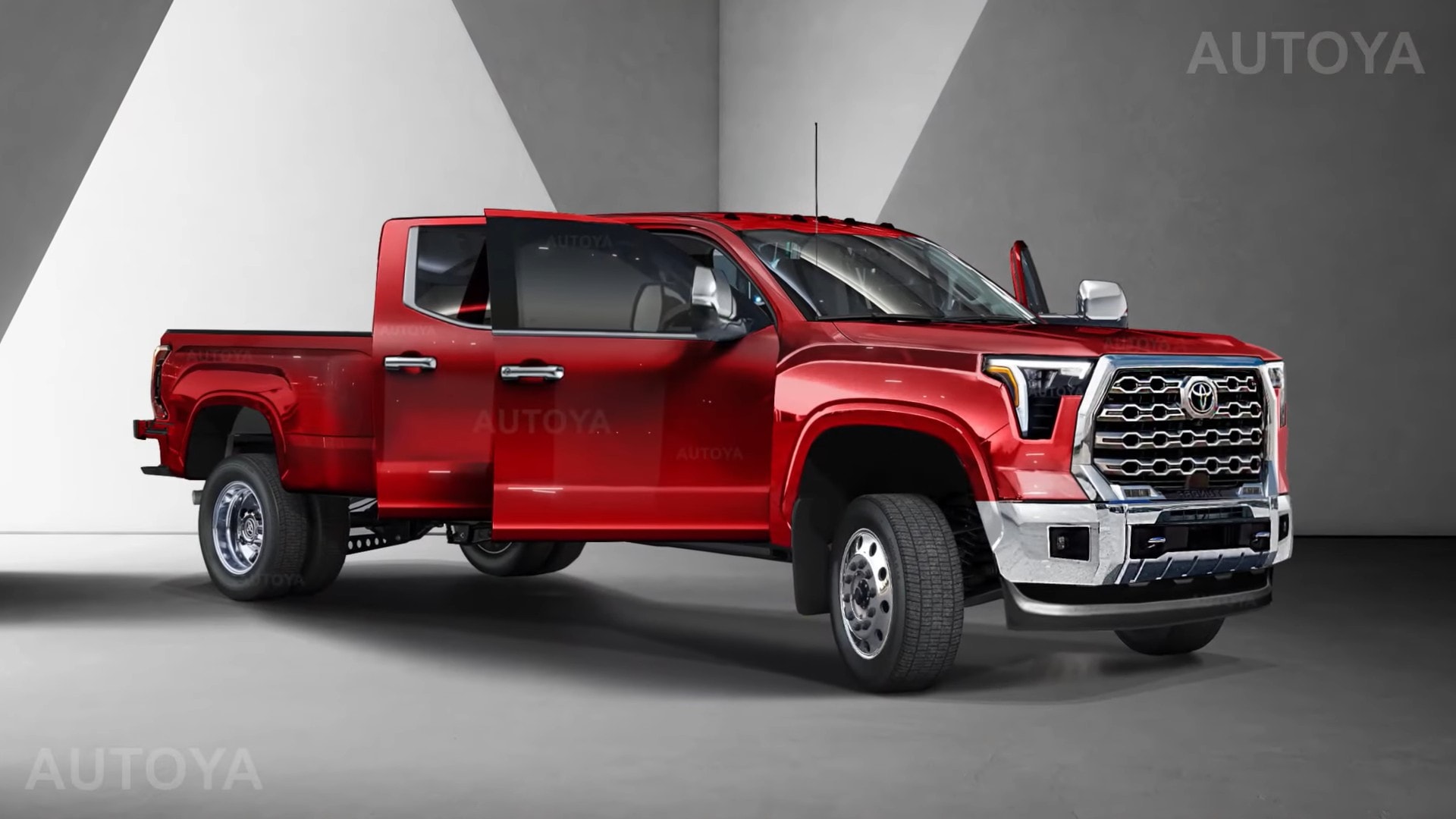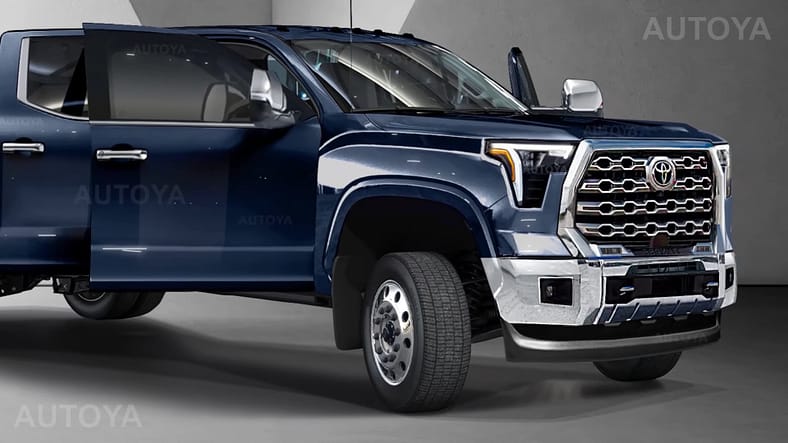The full-size US pickup truck market is about to shrink as Nissan discontinues its Titan and Titan XD models for 2025. This leaves the segment with fewer options, including the dominant Ford F-Series, Chevrolet Silverado/GMC Sierra twins, Ram models, and Toyota Tundra.
While the Tundra’s 2025 model offers a wide range of trims and a powerful hybrid option, some enthusiasts still desire a heavy-duty counterpart. The Tundra’s current lineup, while impressive, may not satisfy those seeking a truly robust and capable truck.
The i-Force Max hybrid powertrain, while providing ample power and efficiency, may not be sufficient for heavy duty tasks such as towing large trailers or hauling heavy loads. Additionally, the Tundra’s frame, though sturdy, may not be as durable as the frames found in dedicated heavy duty trucks.
These trucks are designed to withstand the rigors of off-road driving, harsh working conditions, and heavy payloads. In response to this demand, digital car content creators have been envisioning a Tundra HD variant that could compete with the Ford Super Duty and other heavy-duty trucks. These creators have shared their designs and concepts online, sparking discussions and excitement among truck enthusiasts.
While it remains uncertain whether Toyota will ever produce a Tundra HD, the enthusiasm surrounding these digital creations suggests that there is a significant market demand for a more capable version of the Tundra. A Tundra HD could offer a variety of features that would appeal to heavy duty truck buyers.
The AutoYa info channel on YouTube has a satellite venue called AutoYa Interior, where they are showcasing the latest behind-the-scenes vision video of the upcoming refresh procedure for the Toyota Tundra HD. The CGI expert also doesn’t neglect the classic shade reel both inside and outside, all the while treating the whimsical Tundra HD to classic heavy duty DNA like the dual rear wheels and the massive front fascia or the raised ride height.
This wishful thinking project raises the question of whether Toyota should consider entering the heavy duty truck domain, especially since they can just use the Tundra HD in conjunction with the powerful and torque happy i-Force Max V6 powertrain.
Such a move would align with the growing demand for heavy-duty trucks in various industries, including construction, agriculture, and transportation. While Toyota has a strong reputation for producing reliable and efficient vehicles, its absence in the heavy-duty truck market has left a void that could be filled by the Tundra HD.
By leveraging their existing expertise in vehicle design, engineering, and manufacturing, Toyota could create a competitive heavy-duty truck that meets the needs of discerning consumers. The Tundra HD’s rugged exterior and powerful engine would be a strong foundation for a vehicle capable of handling demanding tasks.

Additionally, Toyota could differentiate itself from other manufacturers by offering advanced features and technologies that enhance safety, comfort, and efficiency. However, entering the heavy-duty truck market would also present significant challenges. Toyota would need to invest heavily in research and development to ensure that their vehicle meets the stringent safety and performance standards required for this segment.
They would also need to build a strong dealer network to provide customers with the necessary support and service. Ultimately, the decision of whether or not to enter the heavy duty truck market is one that Toyota will need to carefully consider.
While there is undoubtedly a market for such vehicles, the company must weigh the potential benefits against the risks and challenges involved. If they decide to proceed, Toyota has the potential to create a successful and competitive product that expands its market reach and strengthens its position in the automotive industry.

